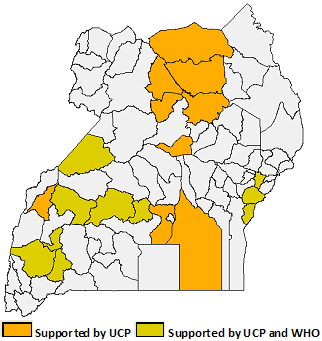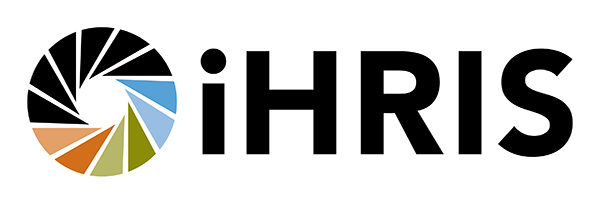Expanding iHRIS Manage to More Districts in Uganda
Uganda is committed to strengthening its health workforce information and using that information to make informed decisions. The new Uganda Capacity Project (UCP), an IntraHealth-led Capacity Project Associate Award, has outlined ambitious goals to support this effort. One goal in the next five years is to ensure all the country’s 85 districts each have a human resources management system. This builds off of the efforts of the Capacity Project, which assisted with customizing and installing iHRIS Manage at the central Ministry of Health (MOH) in 2008, and then implementing the software in 9 districts last year.
As a Year One activity, the UCP is partnering with the World Health Organization (WHO) to expand Uganda's iHRIS Manage to an additional ten districts. A team consisting of two representatives from UCP and one from the MOH is leading the rollout activity on the ground. Each is responsible for a set of districts.
I caught up with one of the team members, Martin Namutso, recently on the phone. Martin is an HRIS developer for UCP and was finishing up a long day of work in Hoima District, one of the four districts under his umbrella. When I asked him to tell me about the rollout project, right away he said, “UCP is taking an approach that emphasizes the iHRIS implementation is MOH-driven.” For example, he explained three technical staff members from the Human Resources Management (HRM) department are serving as point people for each of the districts, and will be receiving and analyzing district reports.
Martin advised the district selection process was strategic and participatory. First, 40 districts with less than 50% of their health worker posts filled were identified. Then, WHO and UCP met to narrow the selection to 15. Next, WHO and UCP, along with three commissioners from the MOH, agreed on the ten districts: Ibanda, Bushenyi, Mbarara, Mityana, Mubende, Kyenjojo, Hoima, Busia, Tororo, and Mbale.
 This map shows the 9 initial districts supported by UCP and the 10 districts supported by both UCP and WHO.
This map shows the 9 initial districts supported by UCP and the 10 districts supported by both UCP and WHO.
Martin said the team on the ground visited each of the districts and conducted an ICT needs assessment to determine what equipment needed to be procured. He noted that none of the districts had computers designated specifically for managing HR data – all were being used for daily office work. Also, each district needed a printer for HR purposes.
WHO provided funding for the necessary computers and printers, along with network switches and cables. Martin installed all the computers with iHRIS Manage and other necessary software. He is now almost finished training HR managers and data entrants in his districts and expects to be done by mid-March.
Martin is also helping his districts to import or enter any existing electronic data into the iHRIS Manage software. The existing data are stored in different formats, and are not necessarily standardized. Martin said this is time consuming, “We have to clean all the districts’ data, and it is so tasking.” Throughout this process, he has found that if districts have data imported for them all at once, they don’t seem to embrace the system for day-to-day use, like entering a new employee or changing a current employee’s salary or position, which would help to ensure sustainability. So, now he is instead training users to enter five to ten records a day. He said entering the historical data will not only familiarize them with using the system but will also encourage them to continue updating it and entering in new employees.
The needs assessment also prompted the UCP to change their game plan. Originally, the UCP planned for iHRIS Manage to reside on a computer in the office of the Principle Personnel Officer (PPO) in each of the districts, but they found the PPO office manages HR data for not only the districts' health employees, but for those employed in water, education, works, veterinary, agriculture, etc., and the records officer's attention was spread too thin. So, they decided to place the iHRIS Manage computer in the office of the District Health Officer (DHO), as those offices will not only be more likely to keep health worker information up to date, but will also benefit from it. Also the health workforce data is first handled in DHO office, and the PPO expect updated electronic data from the DHO office.
Martin said the districts will share their iHRIS Manage reports with the point person in the MOH HRM department. For now, well-connected districts will email reports (exported to Excel) to the HRM leads, and districts with less reliable internet will forward paper reports. Martin said he is looking forward to the districts eventually sharing data with the MOH electronically and in real time. He is also excited to soon include district data in the country’s biannual HR reports, which influence health policy and budgets.
